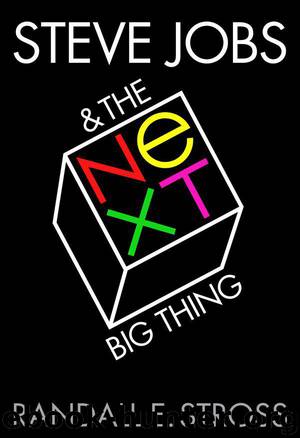Steve Jobs & The NeXT Big Thing by Randall Stross

Author:Randall Stross [Stross, Randall]
Language: eng
Format: mobi
Tags: vl-nfcompvg
Published: 2012-01-09T05:00:00+00:00
Scholars and Dollars
_____________
Utopian hopes of transforming education with new technology can be found long before Steve Jobs bestowed the NeXT Cube upon the world in 1988. We might pick, at random, the ill-fated words of earlier prognosticators who were just as certain as Jobs that their historical moment was the eve of revolution, too. It was none other than Jobs’s own hero, Thomas Edison, for example, who had declared in 1913 that “books will soon be obsolete in the schools,” displaced by the far more efficient medium of “motion pictures,” which instruct “through the eye.”193 Not only film, but also radio, and then television, also had their moments of apparent bright promise too. Each was hailed upon its introduction as the harbinger of extraordinary changes in education, the wave of the future, the end of the printed textbook—and each subsequently failed to have much of an educational impact.194
The pattern continued when computers and education were matched in the 1960s. With universities and colleges such as MIT, the University of Michigan, and Dartmouth leading the way, American higher education was, for a brief historical moment, caught up in a blinding vision of computer-based revolution. Beginning with an experimental exclusively computer-taught course in geometry offered at MIT in 1961,195 a number of schools by the mid-1960s had developed hundreds of courses that at least incorporated computer exercises (Time magazine referred to “The New B.M.O.Cs: Big Machines on Campus”).196 When a new branch of the University of California was established in 1965 at Irvine, it was given a special charter from the state legislature to pioneer in computer-based teaching; “Computer U,” as UC-Irvine was dubbed, possessed its first computer before it actually had a campus upon which to place it.197 At about the same time, a new college in Michigan purposely built its library in such a way as to accommodate only a few thousand books, leaving room for the new media of the audiovisual and computer age. “It’s not that we don’t like books,” said the architect, “it’s just that they aren’t the best way to transmit information anymore.”198 Jobs was too young to have any personal memories of this earlier period, and by temperament he had no interest in learning retrospectively about the distant archeological past of the pre-Apple era. This was unfortunate because he might have done things at NeXT a bit differently if he had paid attention to the history of computers and revolutionary delusions found on campuses twenty-five years earlier.
NeXT offered its Cube to colleges and universities as the ideal base upon which to construct an electronic adjunct to the human instructor. This was precisely the desideratum of the 1960s, a computer tutor which could provide individualized instruction tailored to each student. The idea that computers could democratize the education formerly enjoyed by the elite was an attractive one that was elucidated by professors199 and popularized in magazines for general readers. Redbook told readers that though Prince Charles of England had his own tutor, and so too had America’s own Franklin D.
Download
This site does not store any files on its server. We only index and link to content provided by other sites. Please contact the content providers to delete copyright contents if any and email us, we'll remove relevant links or contents immediately.
Hit Refresh by Satya Nadella(9036)
The Compound Effect by Darren Hardy(8806)
Change Your Questions, Change Your Life by Marilee Adams(7633)
Nudge - Improving Decisions about Health, Wealth, and Happiness by Thaler Sunstein(7613)
The Black Swan by Nassim Nicholas Taleb(7009)
Deep Work by Cal Newport(6877)
Daring Greatly by Brene Brown(6443)
Rich Dad Poor Dad by Robert T. Kiyosaki(6398)
Principles: Life and Work by Ray Dalio(6202)
Man-made Catastrophes and Risk Information Concealment by Dmitry Chernov & Didier Sornette(5921)
Playing to Win_ How Strategy Really Works by A.G. Lafley & Roger L. Martin(5911)
Digital Minimalism by Cal Newport;(5661)
Big Magic: Creative Living Beyond Fear by Elizabeth Gilbert(5610)
The Myth of the Strong Leader by Archie Brown(5421)
The Slight Edge by Jeff Olson(5346)
Discipline Equals Freedom by Jocko Willink(5279)
The Motivation Myth by Jeff Haden(5155)
Stone's Rules by Roger Stone(5026)
The Laws of Human Nature by Robert Greene(4996)
